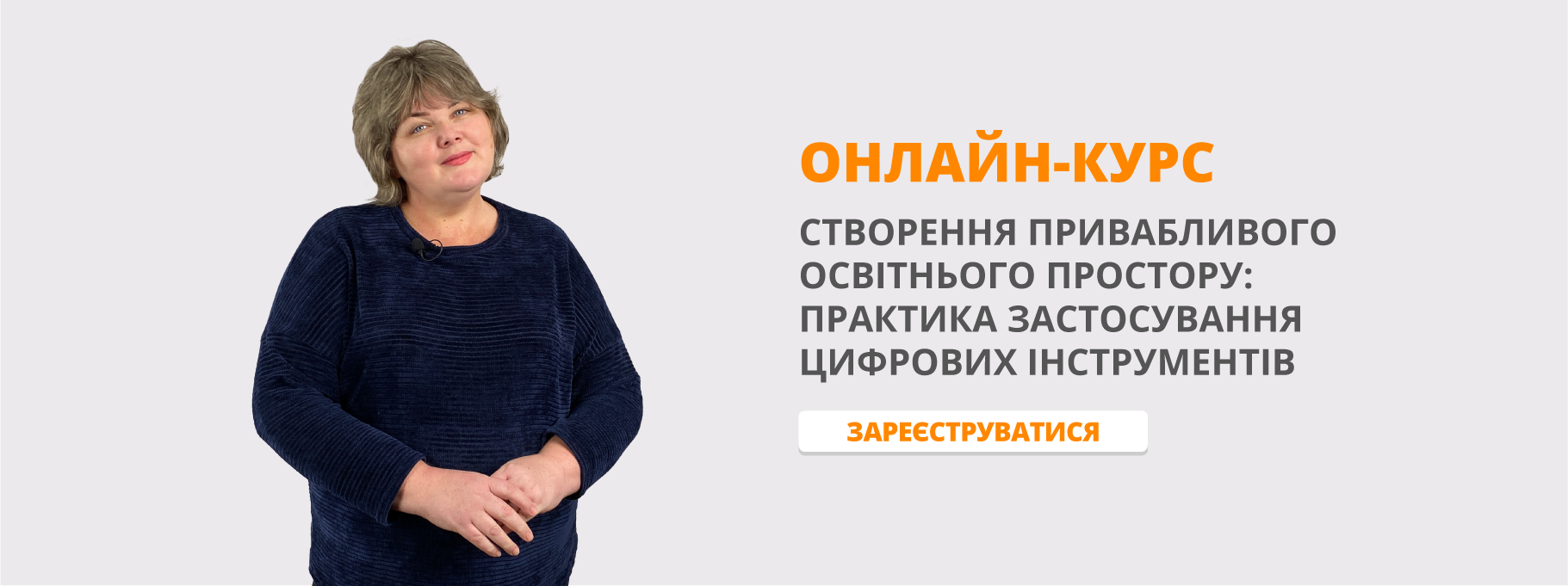Урок. "Подорож Україною. Національні символи України." 5 кл
Тема. Подорож Україною. Національні символи України.
Мета.
Повторити й активізувати лексичний матеріал по темі «Україна».
Удосконалювати всі види мовленнєвої діяльності: читання, говоріння, аудіювання та письма.
Формувати навички монологічного та діалогічного мовлення.
Поглибити знання з правил вживати артикля «The».
Розширити словниковий запас учнів.
Розвивати фонематичний та інтонаційний слух, а також мислення, пам'ять, увагу, спостережливість.
Навчити дітей працювати в групі.
Виховувати любов до Батьківщини, державних символів та почуття патріотизму.
Обладнання: підручник, державні символи, комп'ютер, комп'ютерна презентація, аудіо запис «Kyiv is the capital of Ukraine», індивідуальні картки для аудіювання, роздатковий матеріал: індивідуальні картки для відпрацювання вживання артикля «The», індивідуальні диференційовані завдання на картках для виконання домашнього завдання.
Тип уроку: урок спрямований на формування мовленнєвих навичок користування мовним матеріалом (тренування з метою використання нового матеріалу в різних видах мовленнєвої діяльності).
Form 5 Topic. Ukraine Is Our Motherland. National Symbols of Ukraine.

Кіровський навчально-виховний комплекс №18
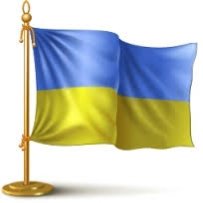 Кіровської міської ради Луганської області
Кіровської міської ради Луганської області

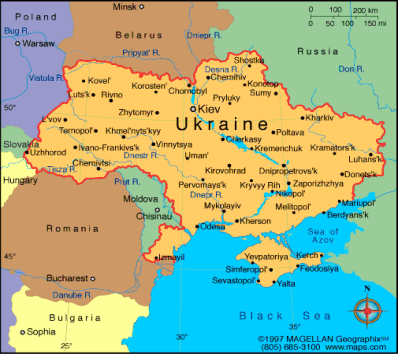

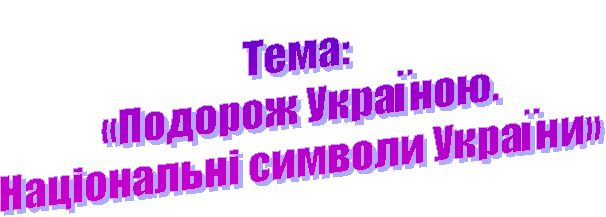
Підготувала:
Вчитель англійської мови
Кіровського НВК №18
Строкань
Олена Миколаївна
Тема. Подорож Україною. Національні символи України.
Мета.
- Повторити й активізувати лексичний матеріал по темі «Україна».
- Удосконалювати всі види мовленнєвої діяльності: читання, говоріння, аудіювання та письма.
- Формувати навички монологічного та діалогічного мовлення.
- Поглибити знання з правил вживати артикля «The».
- Розширити словниковий запас учнів.
- Розвивати фонематичний та інтонаційний слух, а також мислення, пам'ять, увагу, спостережливість.
- Навчити дітей працювати в групі.
- Виховувати любов до Батьківщини, державних символів та почуття патріотизму.
Обладнання: підручник, державні символи, комп’ютер, комп’ютерна презентація, аудіо запис «Kyiv is the capital of Ukraine», індивідуальні картки для аудіювання, роздатковий матеріал: індивідуальні картки для відпрацювання вживання артикля «The», індивідуальні диференційовані завдання на картках для виконання домашнього завдання.
Тип уроку: урок спрямований на формування мовленнєвих навичок користування мовним матеріалом (тренування з метою використання нового матеріалу в різних видах мовленнєвої діяльності).
ХІД УРОКУ
- ПІДГОТОВКА ДО СПРИЙНЯТТЯ ІНШОМОВНОГО МОВЛЕННЯ
- Greeting Привітання.
Phonetic exercise
Students revise sound /ŋ /.
Good morning,
My darling,
Good morning,
Good morning!
We are awaking
And we are rolling,
Now we’re jumping,
We’re running and playing,
We’re having a rest,
And we can not staying.
- Aim Повідомлення теми та мети уроку.
Today we’ll speak about our country, our national symbols of Ukraine and about capital our country.
We’ll read and discuss a text on the topic. We’ll listen to a text about Kyiv and speak about this wonderful city. And we’ll remember rules for the use Article “The” with place names and will be practiced in its use in writing.
Many people think that the place they live in is the best place in the world. Don’t you agree with them? Listen to a poem about our Motherland.
- Warming up Уведення в іншомовну атмосферу.
Заучування вірша. Учитель звертає увагу учнів на дошку, де записаний вірш.
You can go to the East, you can go to the West.
But at home it is better, but at home it is best.
We live in Ukraine, a beautiful land.
It's home for me and you, my friend.
Its towns and villages are so nice.
The Ukrainian people are friendly and wise.
M. Tsypkina
T: Do you like the poem, children? Does it show what you feel when the word «Ukraine» is mentioned? Let us learn the poem.
Учні хором повторюють слова вірша за вчителем, потім декламують його самостійно.
ІІ. ОСНОВНА ЧАСТИНА УРОКУ
- Vocabulary Practice Активізація лексичного матеріалу за темою уроку.
- Look and say what the national symbols of Ukraine are.
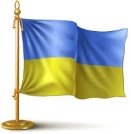
The National Flag
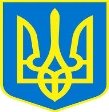
The National Coat of Arms / The Trident
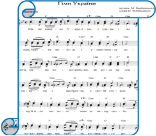
The Ukrainian Anthem
- Look at the pictures and complete the sentences.
1. ____________________ of Ukraine is blue and yellow.
2. The National Coat of Arms of Ukraine is ______________.
3. The song by Pavlo Chubynskyy and Mykhailo Verbytskyy is ______________ .
- Check on homework. Перевірка домашнього завдання.
Speaking. Говоріння.
Фронтальна перевірка. (I-II рівень складності)
Answer my questions, please:
- What is the name of our country?
- What are the national symbols of Ukraine?
- What are the colours of the Ukraine?
- What do they mean?
- What do the children tell their friends about the national symbols of their country?
- What do you know about them?
Індивідуальна перевірка. (ІІІ- ІV рівень складності)
Tell your stories about symbols of Ukraine.
- The National Flag of Ukraine is blue and yellow. The blue colour stands for the clear blue sky and the yellow colours stands for the golden wheat field. There are also other national symbols of Ukraine. The Trident is the National Coat of Arms. And the Ukrainian Anthem is the song by Pavlo Chubynsky and Mykhailo Verbytsky. The national symbols are very important for all the citizens of the country they live in. and everybody must respect them.
- Reading
1)Pre-Reading Activity. Етап підготовки до читання.
Work in pairs.
Ask and answer the questions Ex.1 p.129.
- When and where were you born?
- What is your native language?
- Which places in Ukraine have you visited?
- What places of interest would you like to visit one day?
2) While-Reading Activity. Етап читання.
Ex.2 p.129
3) Post-Reading Activity. Перевірка розуміння змісту прочитаного тексту.
Ex.3 p.129
Complete the sentences. (І-ІІ рівень складності)
- The country you were born in is … .
- People who live in Ukraine are … .
- … is the capital of Ukraine.
- Ukraine is an … state.
- Ukraine is a … country with … nature and … people.
- Ukraine has got … soils, … forests and … steppes.
- Kyiv is one of the .. cities in Europe.
- The Dnipro is the … river in Ukraine.
Answer my questions, please. (ІІІ- ІV рівень складності)
- What country is your Motherland?
- Why called Ukrainians?
- Is our state independent?
- Are there many mountains, forest, river and lakes in Ukraine?
- What is the longest river in Ukraine?
- What city is the capital of Ukraine?
- Relaxation
Game «Do You Know The Towns of Ukraine?».
And now let us play a game. It will be «Do you know the towns of Ukraine?» You know this game, of course. One person names a town, the next thinks of the town beginning with the last letter.
Example: Kyiv — Vinnytsya — Antratsyt...
- Listening Comprehension Тренування учнів в аудіюванні.
1)Pre-Listenmg Activity. Етап підготовки до ayдіювання.
Перегляд презентації.
Т: You are going to listen to the text about Kyiv. Look presentation about the sights of our capital.
2) While-Listening Activity. Етап аудіювання.
Учні прослуховують текст в аудіозапису або з голосу вчителя та виконують вправу.
![]() Match two parts of the text.
Match two parts of the text.
Kyiv is
The founder of Kyiv are
The symbols of Kyiv is
St. Sophia Cathedral is
Maidan Nezalezhnosti is
Khreschatyk is
one of the places of interest.
the central square of the city.
a chestnut leaf.
the main street of Kyiv.
ancient city.
Kyiv, Schek and Horiv.
Text.
The capital of Ukraine is Kyiv, a beautiful and ancient city. More than three million people live here. Kyiv stands on the Dnipro, the biggest Ukrainian river. There are several bridges over it.
Khreshchatic is the main street of the capital. People like to walk along the street. Maidan Nezalezhnosti (it means Independence Square) is in the centre of the city. It is a very beautiful place with a lot of people walking around.
There are many places of interest in Kyiv: St Sophia Cathedral, Kyiv Pechersk Lavra, monuments to Prince Volodymyr and to Hetman Bohdan Khmelnitski, the Golden Gate and many others.
The symbol of the city is the chestnut leaf.
- Post-Listening Activity. Перевірка розуміння змісту прослуханого тексту.
- Answer my questions, please. (І-ІІI рівень складності)
- Is Kyiv a new city?
- How many people live in the capital?
- What is the bigger river of Ukraine?
- What is the name of main street of Kyiv?
- What is the centre of Kyiv?
- Are there any places of interest?
- Want is the symbol of the city?
- Tell your mini-stories about Kyiv. (ІV рівень складності)
Потім за бажанням складають невеличкі повідомлення про Київ (з опорою на запитання вправи).
- Physical Activity
Pupils make movements use any rhyme for physical exercises. For example:
Clap your hands!
Clap your hands!
This is how it’s done.
Slap your knees!
Slap your knees!
Now you’re having fun.
Stamp your feet!
Stamp your feet!
Make a lot of noise.
Squat your down,
Squat your down,
Don’t lift up your voice.
- Grammar Point. Article “The”.
What do you remember about the use of article “the”?
OK. Let’s remember the use of article “the” with place names.
Answer the questions:
- What place names do we use article “the” with?
We use article the with the names of:
- rivers (The Thames),
- oceans and seas (the Atlantic Ocean, the North Sea),
- deserts (the Sahara),
- mountain ranges (the Carpathians),
- island groups (the British Isles),
- national parks,
- museums and galleries (the European Art Museum),
- hotels (the River Island Hotel)
- cinemas (the Odeon).
- What geographical objects we don’t use with article “the”?
We don’t use the with the names of:
- towns and cities (London),
- lakes and mountains (Lake Svityaz, Mount Hoverla),
- streets and squares (Independence Square, but the High Street),
- parks (Central Park),
- shops and large stores (Harrods),
- airports (Heathrow Airport).
- Writing.
Work on the card. Grammar Game.
To revise students ability to use “the” with the place names, the teacher prepares cards with the names of places, gives them to students. Students have to read the names and divide into two groups “THE” and “Without THE”. They have to explain their choice.
The students' sample
Task 1. Level I-II/III.
Read the names and divide into two groups “THE” and “Without THE”.
Askania Nova (nature reserve), Carpathian (mountains), Ay Petri (mountain), Dnipro (river), Svityaz (lake), Bommer (cinema), Arctic (ocean), Gobi (desert), United States of America (country), Lviv (city), Louvre (museum), Heathrow (airport), Tate (gallery), Hoverla (mount), Sivash (lake), Crimean (mountains), Metro (supermarket), Ukraine (cinema), Independence (square), Victoria (hotel), Kagul (lake), Kharkiv (city).
Task 1. Level III/IV.
Read the names and divide into two groups “THE” and “Without THE”.
Askania Nova, Carpathian, Ay Petri, Dnipro, Svityaz, Bommer, Arctic, Gobi, United States of America, Lviv, Louvre, Heathrow, Tate, Hoverla, Sivash, Crimean, Metro, Ukraine, Independence, Victoria, Kagul, Kharkiv.
|
“THE” |
“Without THE” |
|
|
|
|
|
|
|
|
|
|
|
|
|
|
|
|
|
|
|
|
|
|
|
|
|
|
|
|
|
|
|
|
|
|
|
|
The teacher's sample
The teacher can use the names like these:
- The Askania Nova (nature reserve), the Carpathian (mountains), Ay Petri (mountain), the Dnipro (river), Svityaz (lake), the Bommer (cinema), the Arctic (ocean), the Gobi (desert), the United States of America (country), Lviv (city), the Louvre (museum), Heathrow (airport), the Tate (gallery), Hoverla (mount), Sivash (lake),the Crimean (mountains), Metro (supermarket), the Ukraine (cinema), Independence (square), the Victoria (hotel), Kagul (lake), Kharkiv (city).
III. ЗАКЛЮЧНА ЧАСТИНА УРОКУ
- Homework Домашнє завдання.
Task 1. ( І-ІІ рівень складності.).
Complete the Fact File.
Country: Ukraine
Territory: ______________
Main cities: ____________
Language: _____________
National emblem: _____________
Capital city: __________________
Famous people: _______________
Task 2. ( ІІІ рівень складності)
Fill in the blanks with the given words.
Word bank: stripes, climate, cities, flag, area, regions.
- The Ukrainian ___________________ is blue and yellow.
- There are two ______________________ on the Ukrainian flag.
- There are 26 ____________________________ in Ukraine.
- The ____________________ of Ukraine is moderate.
- Ukraine’s ______________________ is 603,700 km.
- The biggest Ukrainian __________________ are Kyiv, Kharkiv, Donetsk, Dnipropetrovsk, Lviv, Odessa.
Task 3. ( ІV рівень складності)
Tell about Ukraine base on the Fact file and sentences.
- Summarizing Підведення підсумків уроку.
Our lesson comes to the and. I’m happy to say we have done good work during this lesson. We discussed a lot of important questions. We also learnt interesting facts about Ukraine. But the main thing we learned is that we love our dear Ukraine.
It is our task to make it beautiful, powerful and the best country in the world. Let’s become the real patriots of Ukraine.
Today you have worked well and shown a good knowledge of the topic. I am pleased with you. Thank you for your work.
Your marks are: Such pupils as: … were at the top of your abilities today you have 11/10, because you were very active and your answers were good.
Some pupils were no active and made some mistakes and your marks are 9/8.
But some of you were very quiet and shy. I think it is better to speak and make mistakes than to sit silently.
- Our lesson is over. Have a nice day.
- Goodbye.
![]() Teacher of English Helen Strokan
Teacher of English Helen Strokan


про публікацію авторської розробки
Додати розробку
